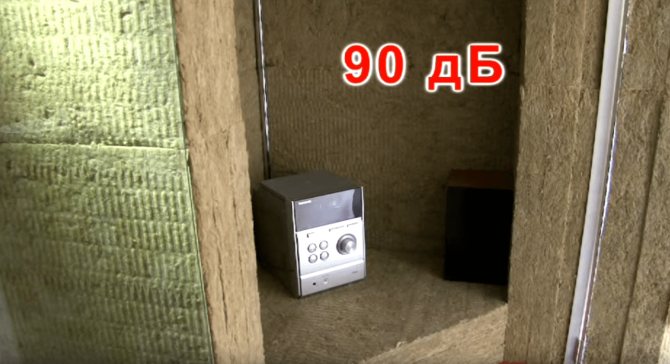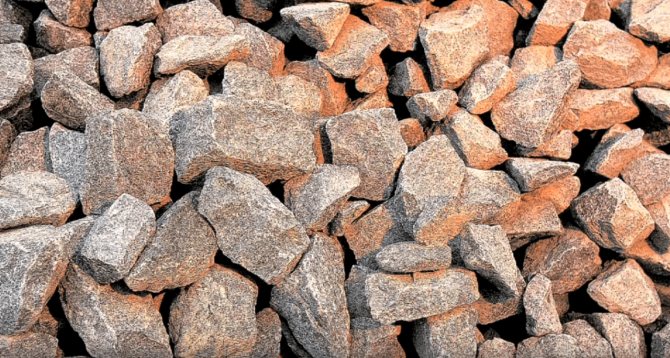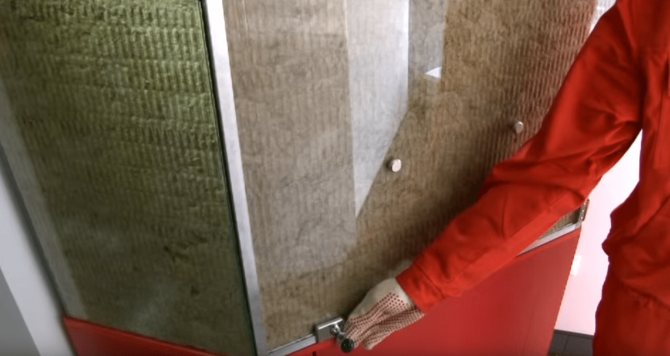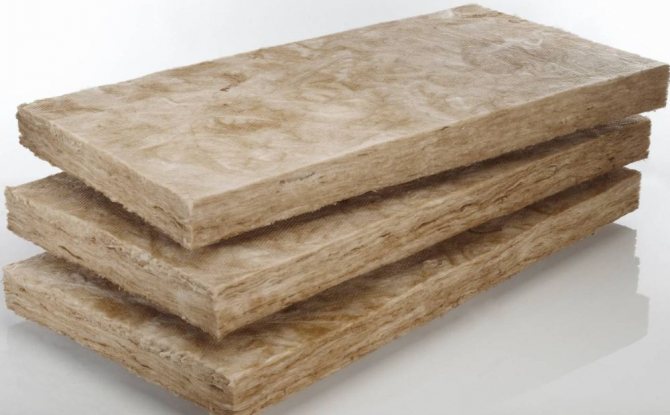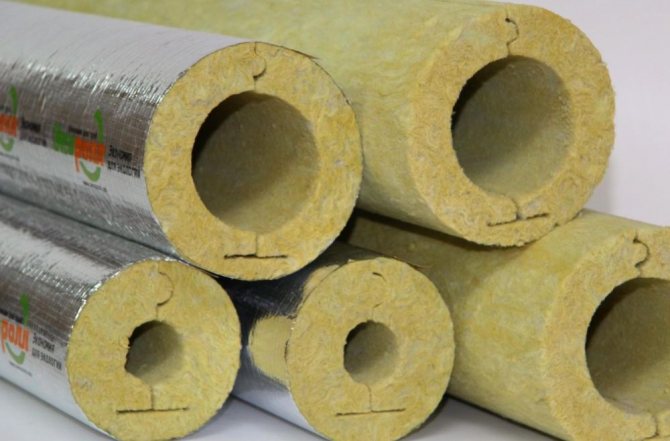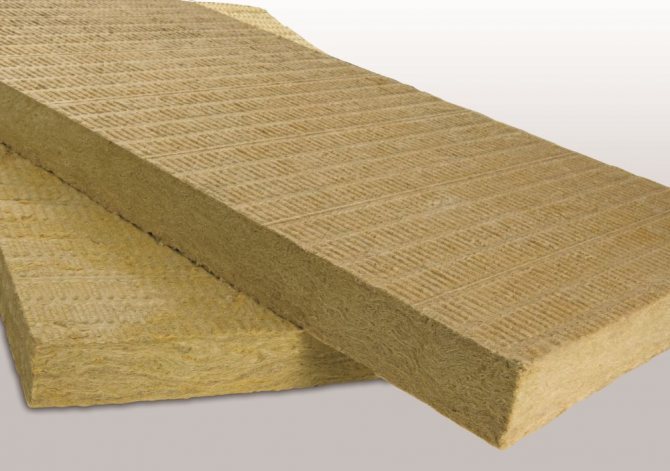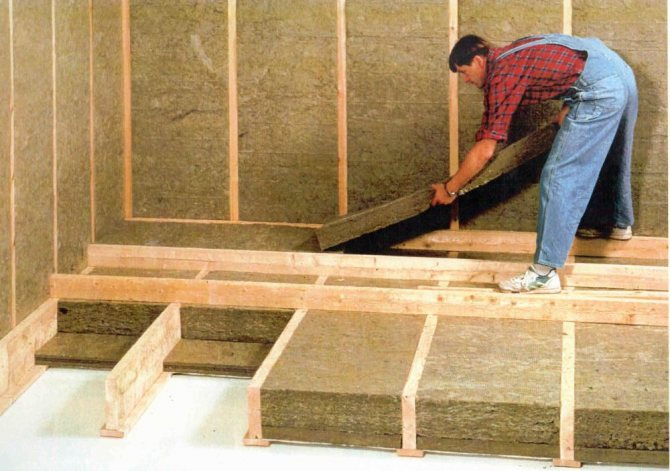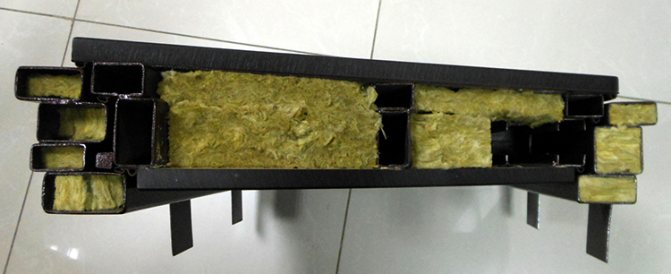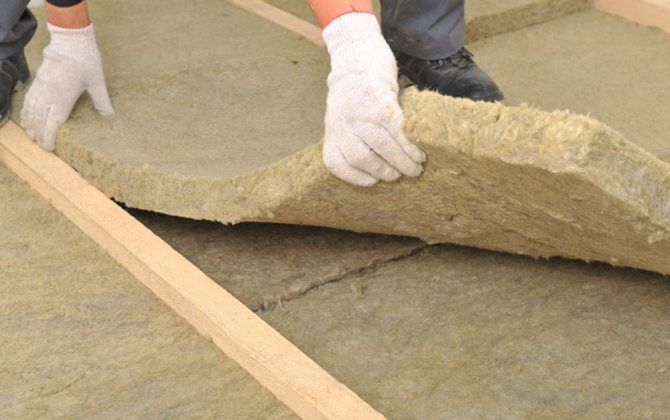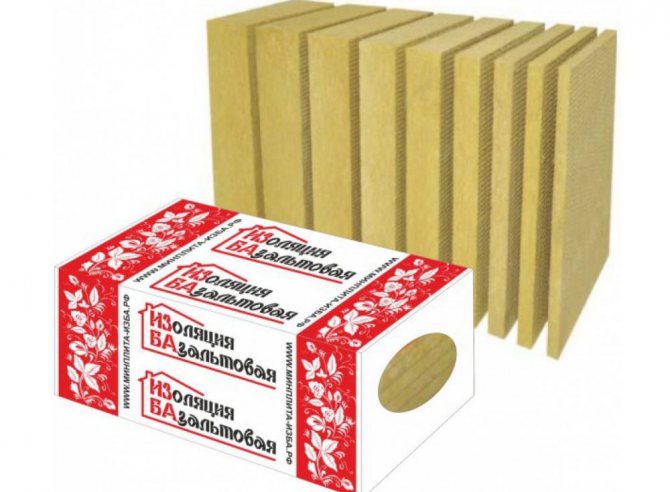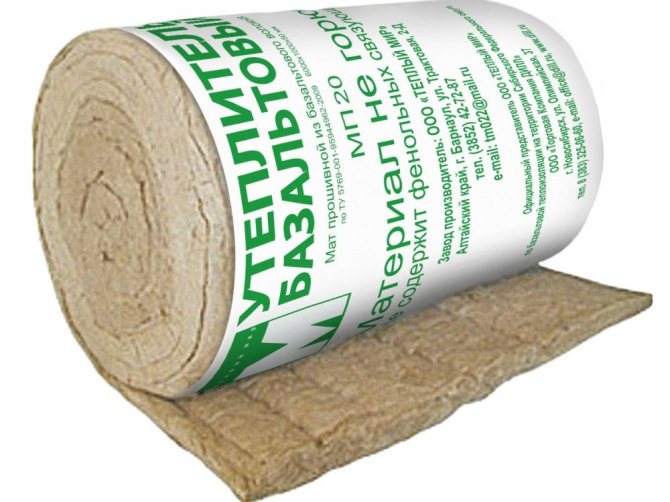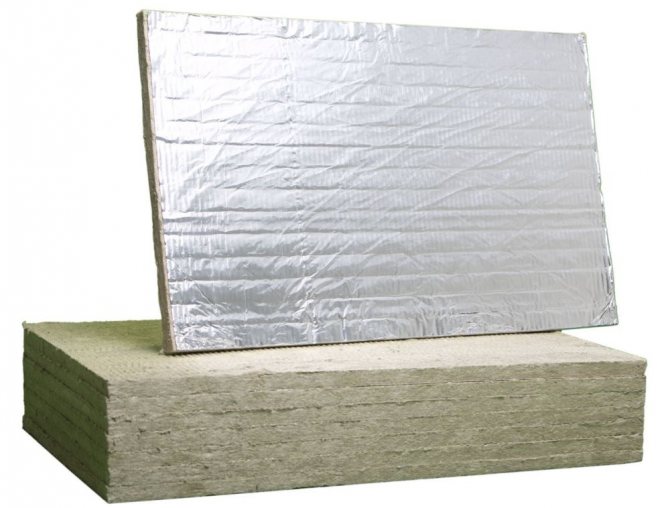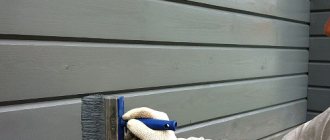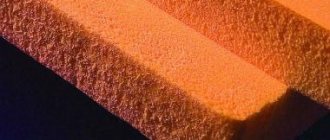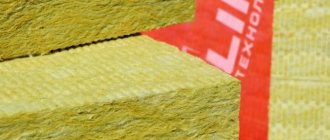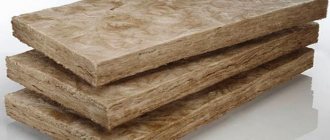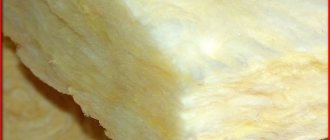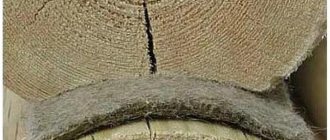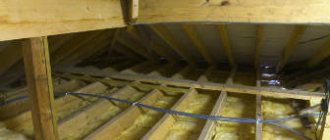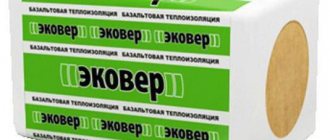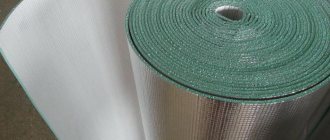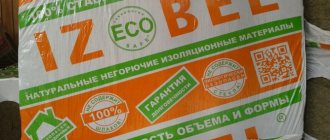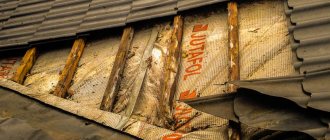In order to keep the house warm longer in winter, and to keep the coolness in summer, people insulate their houses. There are many materials for this, but the best and most popular at the moment is basalt mineral wool. In this material, fibers are randomly located, which are of mineral origin. Therefore, the material was named mineral wool. Now let's figure out what its charm is.

There are three types of mineral fiber insulation:
- slag;
- glass wool;
- basalt wool.
Everyone knows that air is the best insulating material. He is able to provide comfortable living in any room. And the task of any insulation is to restrain it, while making it static, and besides, to leave it dry. After all, if moisture penetrates into the insulation, then it will not be able to fulfill its functions to a greater extent.
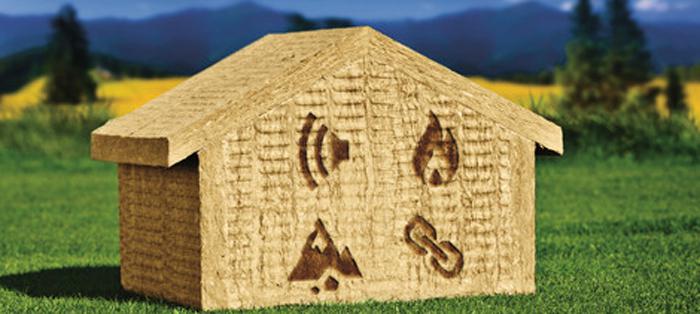

Nowadays, basalt wool insulation is so common because it is able to provide air retention, leaving it dry better than all other materials. What makes it so effective.
Slag wool is made from blast furnace waste. Its color is gray-brown.
Glass wool is made from sand, soda, dolomite, limestone, borax, and broken glass.
What is basalt wool made of?
Consider the technical characteristics of basalt wool, as well as the ways of its application. Among all similar insulating materials, basalt wool has the lowest thermal conductivity. In addition, it is non-combustible, vibration-resistant, and also hydrophobic. It can be of different density, which allows it to be elastic or, conversely, rigid. This quality makes basalt wool versatile.
Basalt wool (technical characteristics of its fiber) allows you to create materials of any strength, shape and size. All these advantages are ideal for absolutely any job.
Manufacturers and prices
To buy high-quality insulation with foil, you need to trust trusted manufacturers:
- Knauf.This is a German manufacturer that focuses on the production of insulation from natural mineral wool using the innovative ECOSE technology. The product is environmentally friendly as it contains no formaldehyde. Even when a person comes into contact with the material, you can not worry about the occurrence of allergies. The products of this manufacturer will become reliable protection against noise and cold. You can buy it at a price of 160 rubles per m2.
Insulation Isover... The technical characteristics of this material are budgetary. It is used to insulate roofs. Differs in high density among its counterparts. They are produced in rolls, which can have different thicknesses: 2, 3, 5, 10 and 15 cm. The material can be purchased at a price of 80 rubles per m2. But what types of insulation should be used for a frame house, you can read here.
Ursa... This brand is one of the most popular today. It is characterized by its long service life, does not break, does not crumble, it is simple and easy to work with. Insulation is produced in rolls with the following thickness: 5; 8 and 10 cm. The material can be purchased at a price of 120 rubles per m2.
Foil insulation is a popular thermal insulation material that can be used to protect any surface from the cold. The main advantage of this heat insulator is its ease of installation and long service life.It can be used to insulate different surfaces, depending on what type of material you will use directly.
At the final stage of the construction of a private house or a wooden bath, the question of which insulation to choose for interior or exterior decoration of premises certainly arises. There are so many types of insulation on the building materials market that an inexperienced person in this matter may feel dizzy.
In this article, we will consider several options for foil insulation. We will tell you about the features of each of them, options and methods of installation.
Places of application of basalt wool of different structure
Soft basalt wool is used where no load will be exerted on the thermal insulation. It is ideal for well masonry or ventilated facades with minimal airflow in ventilation gaps. Typically, these buildings do not exceed 4 floors.
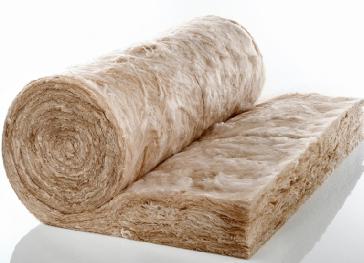

The semi-hard look is basalt wool, the technical characteristics of which allow it to be used in high-rise buildings. The use of such a material shows itself perfectly in ventilated facades, where the speed of air flows is unlimited. In addition to these advantages, basalt wool is used to provide thermal, fire and sound insulation of air ducts.
Rigid basalt wool is used in places where a load will act on the insulation. Several years ago, the decision to use this material anywhere was made based on the density of its structure. However, today this technique is outdated. At the moment, there are many basalt wool heaters, which, even with a minimum density, can easily withstand significant loads.
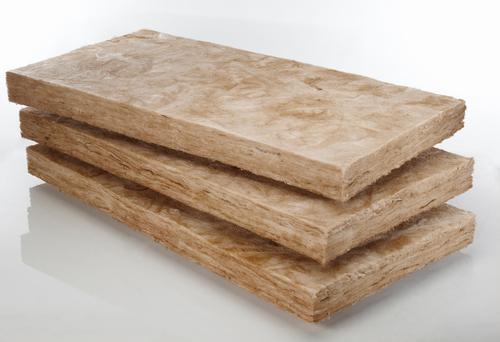

Application in frame housing construction
Basalt slabs are actively used in frame housing construction. It is an excellent non-combustible insulation for walls and other structural elements. The choice of density is determined based on the direct purpose of thermal insulation:
- external wall insulation - slab thickness 100 mm, density - 80 kg / cu. m;
- insulation of interior partitions - enough material with a thickness of 50 mm, a density of 50 kg / cu. m;
- insulation with a density of 35 kg / m3 is suitable for ceilings and floors;
- thermal insulation of a sloped roof - mineral wool with a density of 40 kg / cu. m.
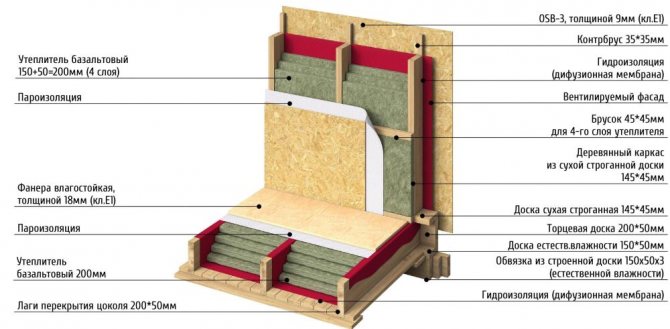

Basalt roll material and slabs serve as a reliable fire barrier, protecting building structures and ventilation ducts.
Useful: MDF panels for wall decoration
Tips for choosing a material for a specific object
Today, basalt wool, the technical characteristics of which are so extensive that it is worth looking more narrowly, is used as a suitable insulation for a specific building. After all, loads can be of a different nature, so they study exactly which ones affect a particular house or building. If, for example, bonded-type thermal insulation will be used on a building, then here it is necessary to choose plates from those that can withstand loads aimed specifically at breaking. When basalt wool will be used on flat areas of the roof, then it is worth paying attention to options that are able to withstand compression.
Installation process
Installing insulation with foil is a simple process that you can do yourself. But only for this you need to follow some rules:
- When installing the material, direct it tediously inward towards the surface with the reflective side.
- The installation of the heat insulator must be carried out in the crate.
- Fastening of the mats is carried out with nails butt-to-joint.
- Seal the joints with foil tape.
- There should be a small space between the insulation and the facing material, about 2 cm.This will be the air gap required for better thermal insulation.
The video shows insulation with foil for the walls inside the house:
Today Foil insulation is produced in a large assortment. Each type of material is used to insulate various surfaces.
Foamed polyethylene foam
The material is produced in rolls. Possesses high insulating qualities. Can be used to insulate any surface. Foil can be present on one or two sides of the material.
Sometimes it is performed to insulate, on one side of which there is a self-adhesive tape. This greatly facilitates the installation process. Most often, such material is used when installing batteries, mounting them behind them. This will prevent heat loss.
Expanded polystyrene
It is realized in the form of massive slabs and rolls. Foil polystyrene foam is used for floor insulation. The material has high strength and resistance to the formation of fungi and mold. Expanded polystyrene is able to maintain its thermal insulation properties at temperatures up to 200 degrees.
Mineral wool with foil
This material is produced in rolls. It can be used to insulate various surfaces, including the foundation of the steam room and chimneys. The thickness of the insulation is 10 cm. Mineral wool can be presented in several versions: glass wool and foil-clad stone wool. But what are the dimensions of the energy flex pipe insulation and how to use it. can be read in this article.
Most often, builders choose the second option, since it is safe, and its heat-saving qualities are higher. Foil mineral wool can be used when insulating stoves and chimneys, because it has increased resistance to high temperatures.
Basalt wool with foil
This material can be used to insulate various surfaces. Its combustion temperature is 300 degrees, so basalt wool will be an excellent protection against fire. Insulation is used for thermal insulation of wooden buildings. The material is produced in the form of plates or rolls.
But what are the technical characteristics of mineral wool insulation and where such a building material is used in construction, is described in the article.
It will also be interesting to find out what characteristics of foam as insulation exist, you can read in this article.
Material for places with high temperatures
There are also segmental parts, cylindrical and semi-cylindrical shapes, which are designed to provide thermal insulation protection of pipelines.
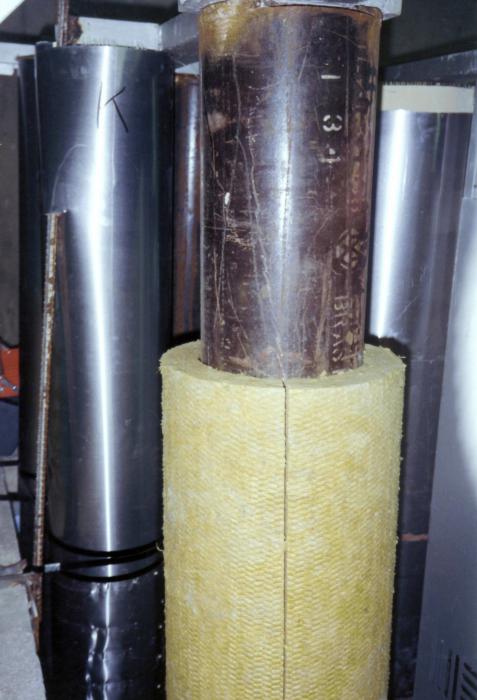

For places with high temperatures, it is also used. There is basalt wool for the chimney, its characteristics meet all fire safety requirements. In addition, it has a very low weight, this is its essential advantage when used in private homes. This insulation also has a water-repellent effect, which prevents condensation from forming on surfaces. Thanks to heat-resistant basalt wool, the chimney is less bulky, its weight is also minimal. However, all fire safety requirements remain at the highest level.
Description
In the production of material for thermal insulation, foamed polyethylene is used in combination with foil. Thanks to it, the material has such a property as reflective thermal insulation. Insulation with foil is called penofol. Using it for thermal insulation work, it is possible to protect the room from cold air and wind. Due to the presence of water-repellent properties, the insulated surface will not get wet. Due to this, it is suitable for wall insulation in the country.
Foil insulation has the following properties:
- high rates of heat and sound insulation;
- light weight, elasticity, easy installation;
- environmental friendliness, since toxic compounds are not used in the manufacture of the material;
- excellent waterproofing;
- long service layer.
What gives foil basalt wool
Now manufacturers produce similar heaters for various types of work that may be required in modern conditions. To ensure the maximum thermal insulation effect, there is foil basalt wool, which, due to its reflective surface, creates better results than ordinary wool.
This material is intended for thermal insulation of high-temperature units, stoves and fireplaces. In addition, it is excellent for cladding around appliances with a high temperature. Often, walls are glued with foil basalt wool to eliminate heat loss. This material cannot chemically react with other materials because it is inert. This feature makes it even more versatile.
Also, the coating is made of fiberglass, which gives the material high thermal insulation protection. It is most useful in ventilation systems to contain noise from mufflers.
Features of installation of heaters with a metal coating
Foil wool can also be used for thermal insulation of household and municipal water supply systems, pipelines and ventilation systems. In industrial production, this insulation is widely used for the purpose of thermal insulation of technological equipment, cold rooms, containers requiring a constant temperature, and other elements of production lines.
A layer of foil, which can be located on either one or both sides of the basalt wool, does not allow heat to leave the room (the heat reflection coefficient is about 97%), which makes mineral wool insulation the best option for thermal insulation of rooms in which a powerful source of heat is located ...
Also, mineral wool can be used to create sandwich panels, which are used for the construction of frame houses. During their production, a layer of insulation on both sides is faced with OSB panels, aluminum sheets, or corrugated board.
Most often, OSB panels are used, since the cost of this material is minimal. In production, you can use OSB 3, OSB 9 and OSB 12 plates similar to Penoflex insulation.
Wall insulation with basalt wool
Foil basalt wool, in comparison with other types of mineral and artificial insulation, has the following advantages:
- Efficiency.
The main functional quality of any insulation is thermal conductivity. We can say that by this characteristic, minwawa surpasses most of the common counterparts. At the same time, given that it is equipped with an additional foil layer that reflects about 97% of the heat leaving the room, the effectiveness of an insulation based on basalt wool is undeniable.
- Fire safety and resistance to deformation like foam for wall insulation.
Foil mineral wool is a completely non-combustible material. For example, Rockwool mineral wool can withstand ambient temperatures up to 700 degrees without any problems.
- Hydrophobicity.
This insulation is capable of repelling water, which guarantees additional protection of the wall from dampness and bloom due to high air humidity.
- Mechanical strength.
Rockwool hard mineral wool has a high tensile strength and resistance to compression, which allows it to be used for thermal insulation of facades outside the building.
- Long term effective operation like foil-clad penofol.
In the process of use, foil mineral wool does not rot, decompose, fungus, rodents, and other small animals do not start in it.
An example of pipeline thermal insulation using basalt wool
- Ease of installation.
To arrange thermal insulation with mineral wool, no specialized equipment is required, or the presence of several working hands. You can do everything yourself without any problems.
- Soundproofing.
- Environmental Safety.
Significant disadvantages of basalt wool with Izospan V vapor barrier arise when the manufacturer neglects the basic requirements of the manufacturing technology of this product. For example, the basalt base itself is characterized by a sufficiently high ability to draw in moisture, which is leveled by the presence of special water-repellent impurities in the final product.
If by an unscrupulous manufacturer, in order to reduce the cost of the product, these impurities were not added, then the product, after short-term operation in an environment with high air humidity, will be saturated with moisture and will lose most of its thermal insulation properties. Repeatingly, let's say that these shortcomings do not apply to a quality product, for example, Rockwool ACC1128.
Basalt wool structure
To understand how mineral wool is produced, consider the manufacturing technology of this insulation, which is practiced by the world's leading company in this market segment - Rockwool.
The microscopic fibers that make up the mineral wool are produced by melting basalt rocks in special blast furnaces with a temperature of 1500 degrees Celsius. In them, the rocks pass into a liquid state. The formation of molten rock into mineral fibers occurs under the influence of a powerful centrifugal force in a centrifuge, or under the influence of a powerful air flow.
We suggest that you familiarize yourself with: What vapor barrier for a ceiling in a wooden floor is better - types, characteristics
After the fibers that make up the mineral wool are created, the process of forming monolithic sheets of insulation begins. For this, the method of spraying fibers under high pressure can be used, or, as Rockwool does, pouring hydromass into special forming blanks.
Production line for the production of basalt wool
In order for the finished mineral wool to have the necessary strength and thermal insulation properties, during the production process, special additives are added to it, which improve the density, vapor permeability and waterproofing properties of the finished product.
After forming the carpet and adding all the necessary impurities to it, the mineral wool is subjected to thermal hardening, which occurs at a temperature of 180 to 250 degrees. This temperature is a catalyst that influences the activation of binding impurities, which polycondensate and transform the rock wool carpet into a monolithic product with a uniform density structure.
Next, the web is connected to the foil. Companies striving to reduce the cost of the final cost of their products as much as possible do this with the help of construction glue, which negatively affects the fire resistance indicators that mineral wool will have.
The Rockwool company, like other trusted manufacturers, connects the carpet to the aluminum layer by stitching the product with galvanized threads, which guarantees the longest effective life of basalt wool.
At the same time, such a connection does not lose its strength even at the highest temperatures. In general, Rockwool mineral wool does not lose its performance in temperatures ranging from -150 to 170 degrees.
2.1 Shapes and sizes
The variety of sizes in which manufacturers produce their products allows you to easily choose the appropriate insulation option for any situation.So, Rockwool foil stone wool comes on the market in the following variations:
- Semi-rigid slabs with Izospan AM (from 50 to 90 kgm³) - mineral wool in semirigid slabs allows you to effectively insulate ventilated facades of buildings, in addition, this option can be used for thermal insulation and fire insulation of ventilation systems and air ducts;
- Rigid slabs (density over 90 kgm³) - such mineral wool is used to insulate surfaces that will be subjected to mechanical stress during operation. For example, it can be used to insulate production equipment or a floor heating system;
- Mineral wool in the form of cylinders - this form factor is used to create thermal insulation outside the pipelines;
- Soft rolls (from 10 to 50 m³kg) are a universal option that is used everywhere: they can be used with equal efficiency to insulate both the walls of the house and roof and attic floors.
Basalt cylinders for pipe insulation
For thermal insulation of the interroof space, it is recommended to use an insulation based on Rockwool basalt wool with double-sided foil.
For thermal insulation of the inner wall of a building, underfloor heating system, pipelines and industrial equipment, it makes sense to use Rockwool mineral wool with one-sided foil - its characteristics will be more than enough.
The correct technology for installing foil basalt wool provides for a two-centimeter gap between the insulation and the finishing material, which is necessary to eliminate heat transfer between solids.
The installation itself is overlapped by 10-15 cm, while the joints are glued with aluminum tape for better thermal insulation. The correct location of the insulation - with the foil side inside the building.
Working with metallized insulation requires care, because violation of the integrity of the coating leads to a deterioration in the waterproofing and reflective properties of the material.
- Thin roll materials made on the basis of polyethylene foam can be overlapped.
- Thick ones, based on expanded polystyrene, are mounted in a joint, which must be glued with metallized tape.
- Some manufacturers produce sheets of foil-coated polystyrene foam, along the edges of which special locks are made, with the help of which the sheets are gathered together. In the process of laying, in order to avoid unnecessary heat loss, it is necessary to control the tightness of the locks.
- To fasten thermal insulation with a thickness of more than 5 cm to a wooden surface, you can use self-tapping screws for wood, under the caps of which you can put metal washers or special plastic substrates for thermal insulation.
Tags: basalt, thermal insulation, foil
«Previous post
The principle of operation of thermal insulation
Mineral wool is designed to generate heat in its chaotically collected fibers, and also muffle sounds. Branded counterparts, which were listed above, have such properties. However, it is worth choosing good professionals who can competently install this insulation. After all, if the craftsmen do the work poorly, then even the Rockwool basalt wool, which is considered the best, will not fulfill its obligations.
Another important point is that the material itself is inside the body of the protective structure, and the functional component of the insulation also depends on how it is installed. It often happens that the installed basalt wool, the price of which is from 400 rubles for insulation for attics and up to 3000 rubles for a high-tech product with a foil coating that can withstand huge temperatures and their changes, does not withstand the load. The walls freeze in winter, and in summer they begin to rot and become moldy.This can only mean one thing - the wizards installed everything incorrectly.
Types of metallized insulation
There are a lot of heaters with a foil layer. Almost every manufacturer of thermal insulation materials has a foil-coated line, and everyone calls their products differently, respectively, the same material may have a different name. Folgoizol, foiloplast, energoizol, all of these are practically the same material.
Consider the most popular types of metal-coated heaters.
The most popular foil-coated material is made on the basis of polyethylene foam. It can be two or three layers.
It is used everywhere in the construction of houses, baths, saunas. Also used for soundproofing and insulating cars. Can be used as a backing for laminate and other flooring.
The thickness of the foil coating rarely exceeds 15 microns. The foil layer can be applied on both sides of the insulation, due to which the material is able to reflect both internal heat and cold penetrating from the outside of the room.
The base made of foamed polyethylene is environmentally friendly, does not rot and resists moisture well. It has internal pores filled with air, due to which it has good thermal insulation characteristics.
Foamed polyethylene foam is produced by the following companies:
- isover;
- isocom;
- technonicol;
- isolon.
It should be noted that there are several technologies for the production of foamed polyethylene:
- An ordinary, inexpensive one is produced using foaming technology, after which it does not undergo additional processing, as a result of which its resistance to dynamic loads is not high enough. Simply put, the material is prone to shrinkage.
- The second method is cross-linked polyethylene, after production it undergoes a special treatment, due to which it becomes denser and, after removing the load, seeks to restore its original shape and size.
Installation of such thermal insulation does not require certain skills:
- It is enough to unfold the roll, cut off the required amount of material and fix it on the insulated surface.
- For fastening, you can use a construction stapler.
The second option for fixing the "shiny", pressing it down with battens for siding or lining. The insulation is laid with an overlap of no more than 10 cm, the joints are glued with metallized tape and pressed with a rail, or fixed with staples.
Another type of metal-coated insulation is mineral wool.
It is mainly used for external insulation or for thermal insulation of attic rooms. Mineral wool (glass wool), even without a metal layer, has good thermal insulation qualities. The presence of a metal layer on the surface only enhances its effectiveness.
Mineral wool also has disadvantages. First of all, it is afraid of moisture, therefore, during internal work, it is used only for dry rooms, mainly for roof insulation. The second feature that must be taken into account is almost zero resistance to loads. This means that even an insignificant weight of the load is able to squeeze the mineral wool, as a result of which the thermal insulation properties are sharply reduced. It is not effective to use mineral wool for floor insulation.
Often, metallized mineral wool is used to insulate pipelines and chimneys. This is due to the low flammability of the material and the ability to withstand temperatures up to 300 degrees.
Installing such a heater is a little more difficult than the previous one:
- For fastening to concrete, brick and gas-block bases, special dowels are used for insulating materials, the head of which is wide, due to which it does not break the loose structure of the insulation.
- It is better to lay the foil wool slabs on the back of the ceiling boards, outside the room. Such a scheme will prevent the insulation from getting wet, as a result of which the loss of useful heat in the room will decrease.
We suggest that you familiarize yourself with: Floor screed mixture - 105 photos of the best options for the coming year!
The material is used in humid rooms. Thanks to the foil layer, it reflects heat and prevents moisture from entering the material.
Expanded polystyrene is a derivative of polystyrene foam. The structure is dense, finely porous, due to this, it resists external loads well. Easily supports the weight of an adult, so you can step on it during installation. The material is recommended by manufacturers as a basis for laying the underfloor heating system.
Some companies apply special marking lines on the top layer of metallized film, with the help of which it is convenient to control the correct laying of the heating elements of the warm floor.
It is rarely used to insulate the walls of the house, because costs a little more than ordinary polystyrene foam and its use is not economically feasible.
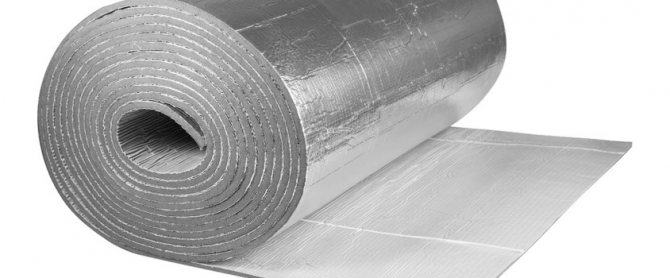

The material has features that distinguish it from other metal-coated heaters.
The fact is that a basalt slab is capable of withstanding temperatures up to 700 degrees. This makes it possible to use the material in the construction of buildings that must meet the highest fire safety requirements.
For example, foil-clad basalt slabs are used in the construction of gas stations.
Benefits
- The thermal conductivity of basalt wool is the lowest among the rest of the insulation, which allows you to keep heat almost completely. His losses are negligible. When facing an object with basalt slabs, much less material is spent than when using other insulation materials.
- Does not deteriorate under the influence of aggressive environment and chemicals. This durability allows the material to remain in its original form both visually and functionally for many years.
- The manufacturer's warranty period is 30-40 years. However, builders claim that it is much longer, and one more, or even a couple of dozen, can be added to these numbers.
- It isolates any sounds very well, even very loud and harsh ones. In addition, the structure of basalt wool does not deteriorate over time from vibration. This is a significant plus over other heaters.
- UV, mold and mildew resistant.
- Easily withstands extremely high temperature fluctuations.
- Under no circumstances burns or explodes, absolute fire safety.
- Does not react with other materials and chemicals.
- Environmentally friendly material.
- Affordable price with the best quality.
We insulate the bath correctly
In fact, such a heater is the main thermal insulation material in a shell of aluminum foil, which gives it a whole range of positive qualities.
- The foil layer is an excellent heat reflector that provides a more effective thermal insulation result.
- The service life of the material can reach 50 years, while its basalt variety is recognized as the most durable.
- The foil acts as a water barrier, preventing moisture from penetrating into the insulation structure, so the pipeline will be reliably protected from corrosion.
- If you purchase certified materials, you can be sure of their high quality and 100% safety for humans and nature.
- Foil pipe thermal insulation successfully absorbs sounds and dampens noise, making the room comfortable for staying or working.
- A wide range of sizes and thicknesses of technical insulation, which allows you to choose the best option for each object.
Special aluminum tape is a faithful assistant for complex thermal insulation of pipelines. It can be used to create a sealed thermal circuit and provide durable insulation.
Mineral wool. Mineral wool materials - cylinders and rolls for thermal insulation of pipelines - include several types of products at once.
- Fiberglass insulation. Popular material, largely due to its affordable cost and a successful combination of positive qualities. Low coefficient of thermal conductivity, excellent sound insulation due to a large number of the finest, chaotically intertwined fibers - what else is needed for excellent protection of pipes from freezing and overheating? Here's just a minus - despite the assurances of manufacturers about the environmental friendliness of modern fiberglass products, it still needs to be installed using personal protective equipment so that small particles do not enter the body and do not cause serious complications.
- Basalt wool. High-quality, non-combustible material, which is made on the basis of a synthetic binder and does not contain toxic or hazardous compounds in its composition. It is distinguished by a low coefficient of thermal conductivity, good sound absorption, the ability to maintain functionality in conditions of temperature changes and resistance to aggressive chemicals. Fungus or mold will never appear on the surface of foil basalt insulation, it will not rot or decompose during its service life and will provide more than 50 years of reliable operation.
- Foamed rubber. This insulation has many advantages: here you also have a moisture-resistant structure with a low coefficient of thermal conductivity, the ability to maintain functionality in a wide temperature range and resistance to chemicals. Such foil insulation, which you can buy inexpensively on the website of our company, is distinguished by ease of installation, immunity to the appearance of mold and mildew, as well as the absence of susceptibility to decomposition and decay. Good elasticity values allow the foam rubber rolls and tubes to fit snugly in any section of the pipeline.
- Foamed polyethylene. Modern thermal insulation that impresses with its ease of installation. It is soft, elastic and moisture resistant, thereby protecting the pipeline from corrosion. With the help of such insulation, you can create an aesthetically pleasing and effective coating. Unfortunately, the prices of foil-clad heaters of this type are quite high, and besides, it does not have a very low thermal conductivity, therefore it is used less often than its counterparts.
Would you like to order 5 mm thick roll foil insulation? We will help you make the right choice - call today!
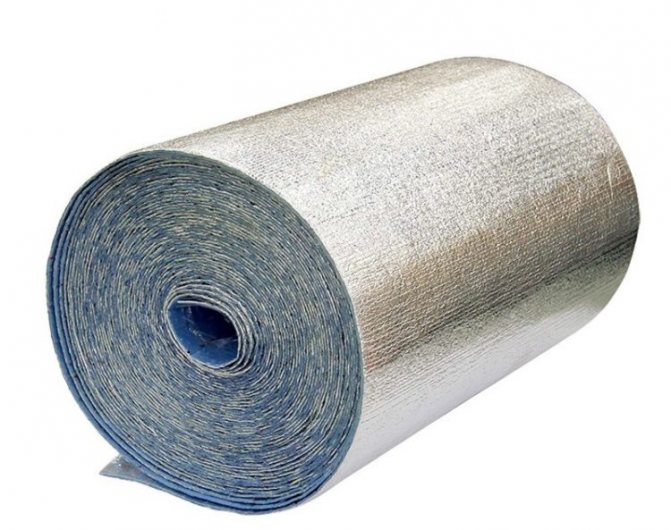

Favorable prices for thermal insulation for foil-coated pipes! Call now! 7
Let's take a closer look at the general characteristics and advantages of metallized heat-insulating material:
- a heat insulator with a metal film reflects heat and retains it inside the room or structures;
- does not rot or rots very slowly. According to manufacturers, the service life can be up to 95 years;
- in the case of aluminum insulation based on foamed polyethylene, the material practically does not absorb moisture, which makes it possible to use it as a floor insulation in wet rooms (baths, steam rooms, showers, saunas);
- almost all metallized heaters absorb sound waves well, therefore, they can additionally be used as sound insulation;
- ease of installation is another advantage. For example, in order to mount such a heater on the walls of a bath, it is enough to have a clerical knife and a construction stapler. The stapler brackets secure the heat insulator securely to the wooden walls.
Foil foamed polyethylene (thermal insulation) is very popular for warming bath rooms and steam rooms. Correctly carried out work on the installation of insulation significantly reduces the amount of fuel required to heat the bath to normal temperature.
Everyone who has heated a wooden bathhouse at least once on a winter evening has watched the heat seep between the logs, which turns into steam in the cold and rises. Even if the logs or beams of the bath are laid on a good insulation and the joints are additionally foamed with polyurethane foam, this phenomenon cannot be avoided. Only the insulation of the inner surface of the walls and ceiling with foil insulation will help.
We suggest that you familiarize yourself with: Mineral wool or basalt wool, which is better
The whole process of warming can be divided into several stages:
- preparatory work;
- installation of insulation;
- installation of guides for attaching the finishing;
- installation of "lining".
Instead of "lining", planed boards can be used, but, as a rule, it is "lining" that is used more often.
At the stage of preparatory work, the walls must be freed as much as possible from all that is superfluous. Dismantle benches and shelves if they have already been installed. Nails, self-tapping screws should not stick out of the walls, if it sticks out, they need to be dismantled or driven deeper.
After that, you can start installing the insulation:
- First of all, the ceiling is insulated. Thermal insulation is cut into strips, the length of which is 20 cm longer than the length of the ceiling. This is necessary in order to create an overlap of the ceiling insulation with the insulation on the walls and to prevent heat loss in the corners.
- The strips are fixed to the ceiling with the staples of a construction stapler. It is convenient and takes a minimum of time. The insulation is attached to the walls according to the same principle.
- The joints of the material in the corners can be glued with tape or secured with counter strips.
- After the walls are sewn up, you can start installing the guide rails, which will additionally press the insulation, preventing it from breaking through.
Below we suggest watching a video on the topic: "How to insulate a bath with foil insulation".
Thermal insulation with foil: technical characteristics
The insulation contains foamed polyethylene with foil. It is thanks to the foil that it has a property called reflective thermal insulation (it is almost 97% effective). Insulation with foil - the name penofol.
Insulation protects the room from cold and wind. And its water-repellent property will not let the surfaces get damp.
Foil with polyethylene together form a high-quality insulation, which has the following advantages:
- High heat and sound insulation.
- Lightweight and flexible for easy installation.
- Eco-friendly material without toxic compounds.
- Good waterproofing.
- Foil insulation can be used for a long time without decay.

